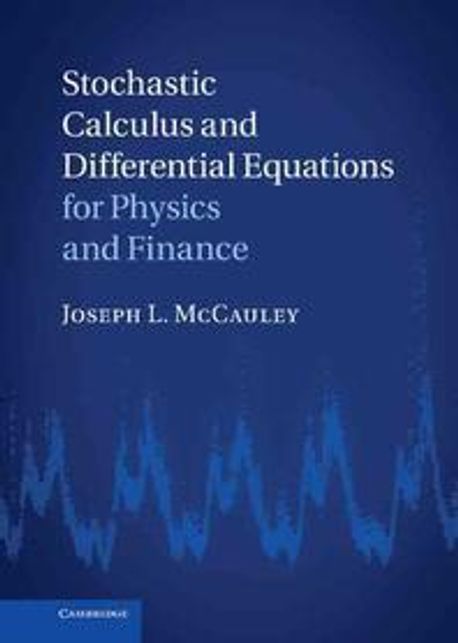
단행본
Stochastic Calculus and Differential Equations for Physics and Finance
- 발행사항
- New York : Cambridge University Press, 2013
- 형태사항
- xi, 206 p. : ill. ; 26cm
- 서지주기
- Includes bibliographical references(p.200-203) and index
소장정보
| 위치 | 등록번호 | 청구기호 / 출력 | 상태 | 반납예정일 |
|---|---|---|---|---|
이용 가능 (1) | ||||
| 자료실 | E205116 | 대출가능 | - | |
이용 가능 (1)
- 등록번호
- E205116
- 상태/반납예정일
- 대출가능
- -
- 위치/청구기호(출력)
- 자료실
책 소개
Stochastic calculus provides a powerful description of a specific class of stochastic processes in physics and finance. However, many econophysicists struggle to understand it. This book presents the subject simply and systematically, giving graduate students and practitioners a better understanding and enabling them to apply the methods in practice. The book develops Ito calculus and Fokker?Planck equations as parallel approaches to stochastic processes, using those methods in a unified way. The focus is on nonstationary processes, and statistical ensembles are emphasized in time series analysis. Stochastic calculus is developed using general martingales. Scaling and fat tails are presented via diffusive models. Fractional Brownian motion is thoroughly analyzed and contrasted with Ito processes. The Chapman?Kolmogorov and Fokker?Planck equations are shown in theory and by example to be more general than a Markov process. The book also presents new ideas in financial economics and a critical survey of econometrics.
Provides graduate students and practitioners in physics and economics with a better understanding of stochastic processes.
Provides graduate students and practitioners in physics and economics with a better understanding of stochastic processes.
목차
1. Random varables and probability distrivutions
2. Martingales, Markov, and nonstationarity
3. Stochastic calculus
4. Ito Processes and Fokker-Planck equations
5. Slfsimilar Ito processes
6. Fractional Brownian motion
7. Kolmogorov's pdes and Chapman-Kolmogorov
8. Non-Markov Ito processes
9. Black-Scholes, martingales, and Feynman-Kac
10. Stochastic calculus with martingales
11. Statistical physics and finance: A brief history of each
12. Introduction to new financial economics
13. Statistical ensembles and time-series analysis
14. Econometrics
15. Semimartingales
